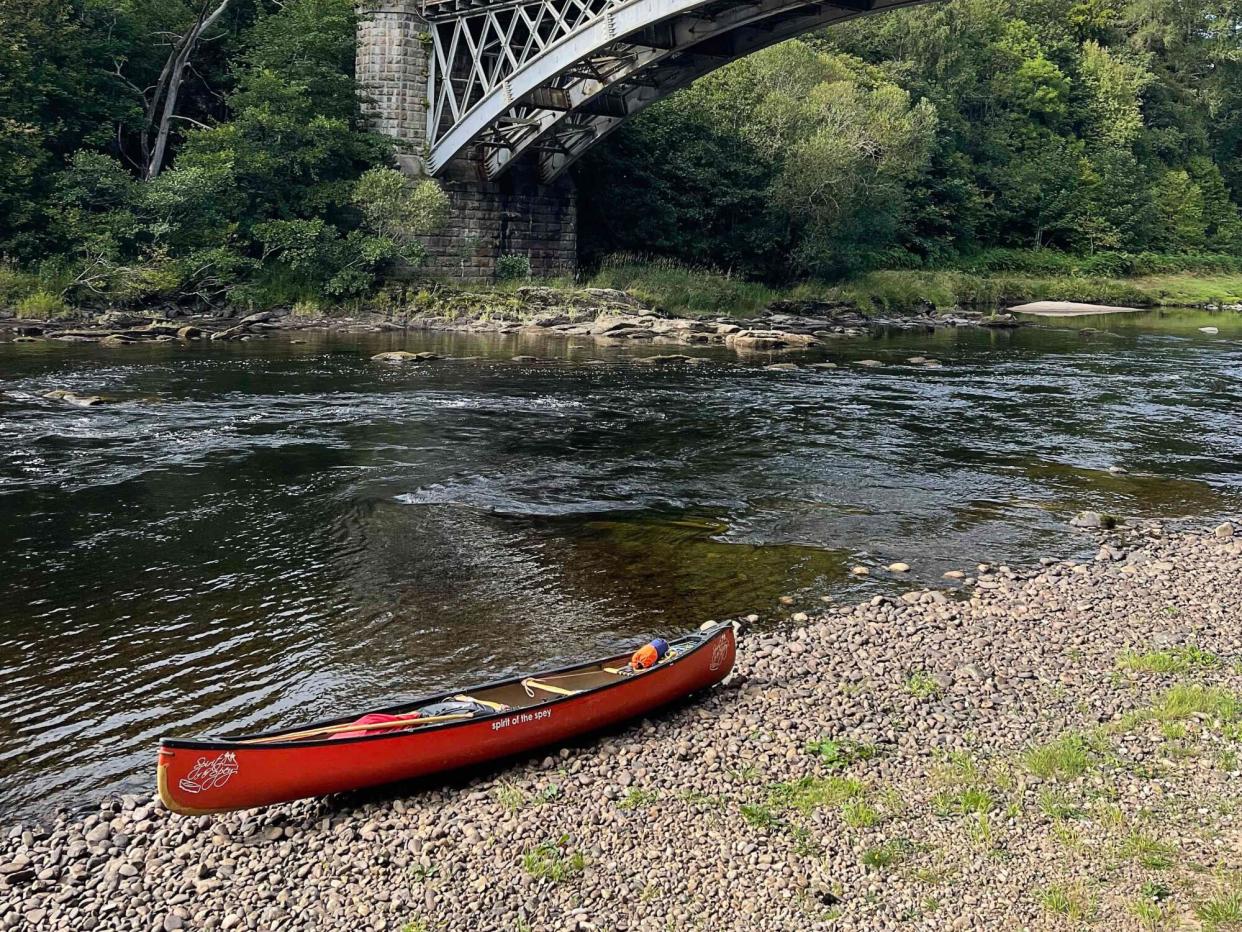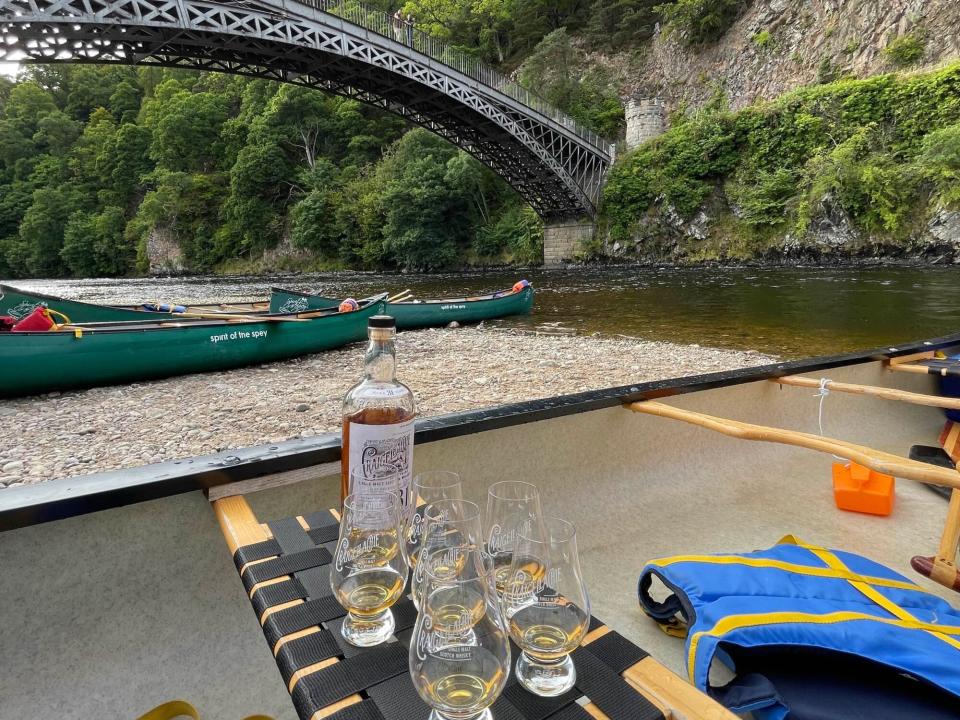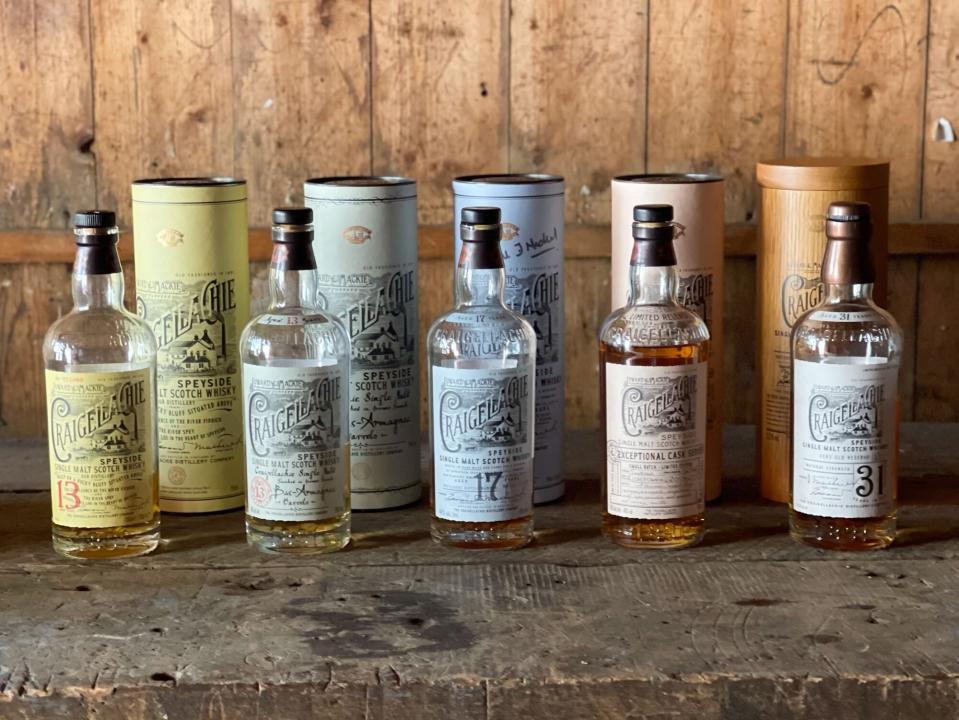The Best Way to Travel Through Scotch Country? By Canoe

Brad Japhe
I love Scotch. In fact, it's probably my favorite liquid on earth. As a token of my appreciation, I embark on a pilgrimage to its fertile breeding grounds at least once in any normal year. This could land me in one of several malt-producing regions across the country: the loch-pocked meadows of the Lowlands; the peat-filled fields of Islay (also known as "Whisky Island"); the idyllic village of Campbeltown, caressing the slopes of the Kintyre Peninsula.
Most commonly I end up in a place called Craigellachie. It's a quaint town about a four-hour drive north of Edinburgh, with less than 600 residents. And yet roughly 70% of the world's single malt is crafted within a 30-mile radius of here. Its outsized significance in the world of Scotch is owed to positioning at the heart of the River Spey — a freshwater artery that has played a pivotal role in the proliferation of whisky production over the past 200 years.
As such, I commune with it in as many ways as I can. I've swam in it; I've sipped from it; I've jogged along its banks. But it never occurred to me that I could actually float atop its rapid flow … until one fateful lunch with longtime local Matthew Cordiner.
"I've canoed down the Spey with many groups from around the world over the years," he told me over a comically large plate of fish and chips, in the basement pub of the world famous Craigellachie Hotel. "For me it's a great way to experience the area, taking in views that would be impossible to see any other way. And the rapids have only tipped us over a few times."
Related: How to Plot Your Next Whiskey Pilgrimage
In other words, a spot of liquid courage was in order. And for that Cordiner was uniquely qualified to help. He actually holds a key to the Craigellachie distillery just up the hill from the hotel of the same name. To be clear, we weren't breaking in; the facility's parent company employs him as Global Malt Whisky Ambassador.
The whisky crafted at Craigellachie is bold and almost meaty, on account of the old fashioned worm tubs that slowly condense the new make during distillation. "These long copper tubes sit in a large tank of cold water and snake back and forth, gradually getting narrower," Cordiner explained. "They are much more expensive to maintain than modern condensers, but we find that they bestow the spirit with extra flavor, creating a dram with a distinctive, muscular character." For more than a century that brawny spirit has formed a substantial component of John Dewar & Sons Blended Scotch.
"Our distillery is built on a rock bluff, situated above the confluence of the River Fiddich and the River Spey," he told me, as we sat in a dunnage warehouse getting ready to sample the stock. "The name translates from the Gaelic, 'Creag Eileachaidh,' meaning, craggy rock."

Brad Japhe
"I did not know that," I assured him. But I did know about the whisky he was pouring into my glass. It was a 13-year-old single malt finished in casks formerly reserved for Armagnac—the inaugural edition of the distillery's Cask Collection. The late-stage influence of French brandy during maturation resulted in an added layer of tropical fruit as well as baked apple pie on the palate.
"You ready to ride?" Cordiner asked, snapping me out of my moment of quiet contemplation. I nodded my head. He grabbed a rucksack of indeterminate contents, and not long after we headed down to the banks of the Spey, beneath the cast iron arch of the Carron Bridge. There we met our river guides from Spirit of the Spey, an outfitter specializing in canoe adventures through the remote and rugged Scottish Highlands.
As we situated ourselves in our floatable dugout, I was instructed to put on kneepads. Apparently, paddling from your knees improves stability when rapids approach. "We're definitely flipping this thing," I remember thinking in the moment.
The journey started off rather calmly as we began paddling our way through the lush green hills and sheep-strewn meadows straddling either side of the rolling river. "The Spey is the fastest flowing in Scotland due to all the fresh spring water flowing into it from the surrounding hills, streams," Cordiner reminded me. "They act as water sources for so many of the region's distilleries."
Soon we were skimming past their backyards: The Aberlour, The Macallan. Victorian manors emerged, separated by fields patrolled by longhaired Highland cattle. Then came the first set of rapids…
"Remember to face downstream," our guide told us. "And avoid the 'Vs' on the surface of the water — that means there are rocks directly below."
There were also rocks directly overhead, in the form of sheer granite walls. I might have become a touch too enamored with the scenery because when I looked back at the water we were somehow perpendicular to the river, hurtling straight towards that dreaded V we had been warned about.
Soon the submerged boulder pile had us pinned up against it. Literally caught between a rock and a hard place. Certain doom — or soaked clothing, at the very least — seemed imminent. But somehow we eventually levered ourselves off the snag. Crisis averted. "This is nice," I said to no one in particular, making a concerted effort to enjoy each subsequent moment of this spectacular setting.

Brad Japhe
It was all smooth sailing from there, and several miles downstream we arrived at our destination: a "wee" beach beneath the iconic Telford Bridge, at the edge of Craigellachie. "It was built by renowned engineer Thomas Telford in 1814," Cordiner told me as we approached the shore. "It's thought to be one of the finest examples of a cast iron bridge in the world — although I might be a bit biased."
Upon landfall, he reached into his rucksack to finally reveal its contents: a bottle of 31-year-old Craigellachie, along with a half dozen Glencairns into which to pour it.
"For a truly special moment, you need a dram to match," he reasoned while doling out the good stuff. A robust whisky, its tasting notes are probably more adequately measured in experience than adjectives; it sings of a journey down these storied waterways — one that helped birth it 31 years prior. I didn't need the canoe to carry me any further from here. My feet were floating over the River Spey all on their own.

